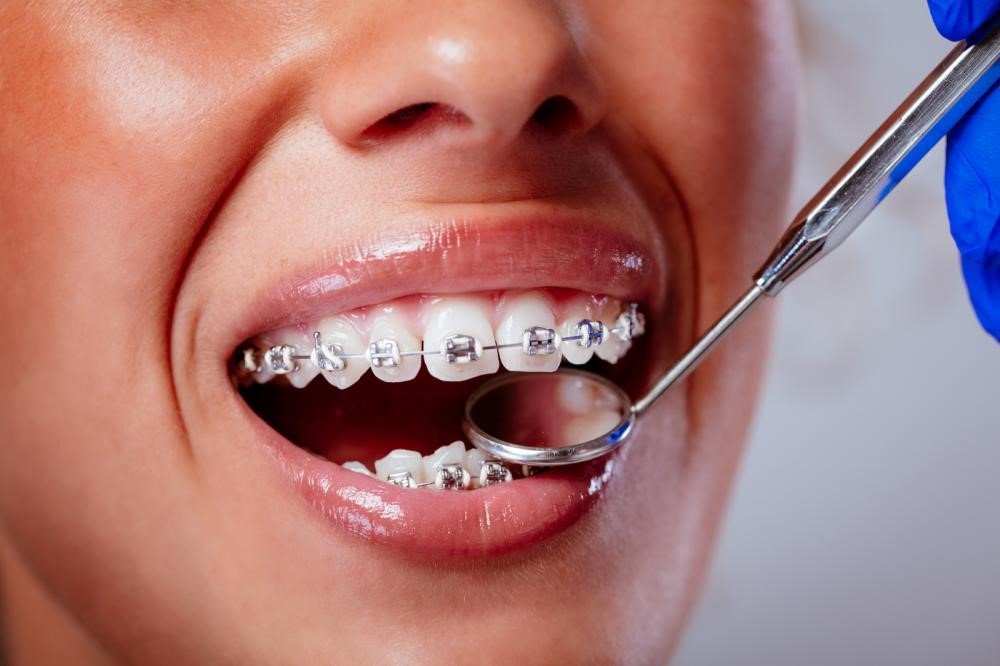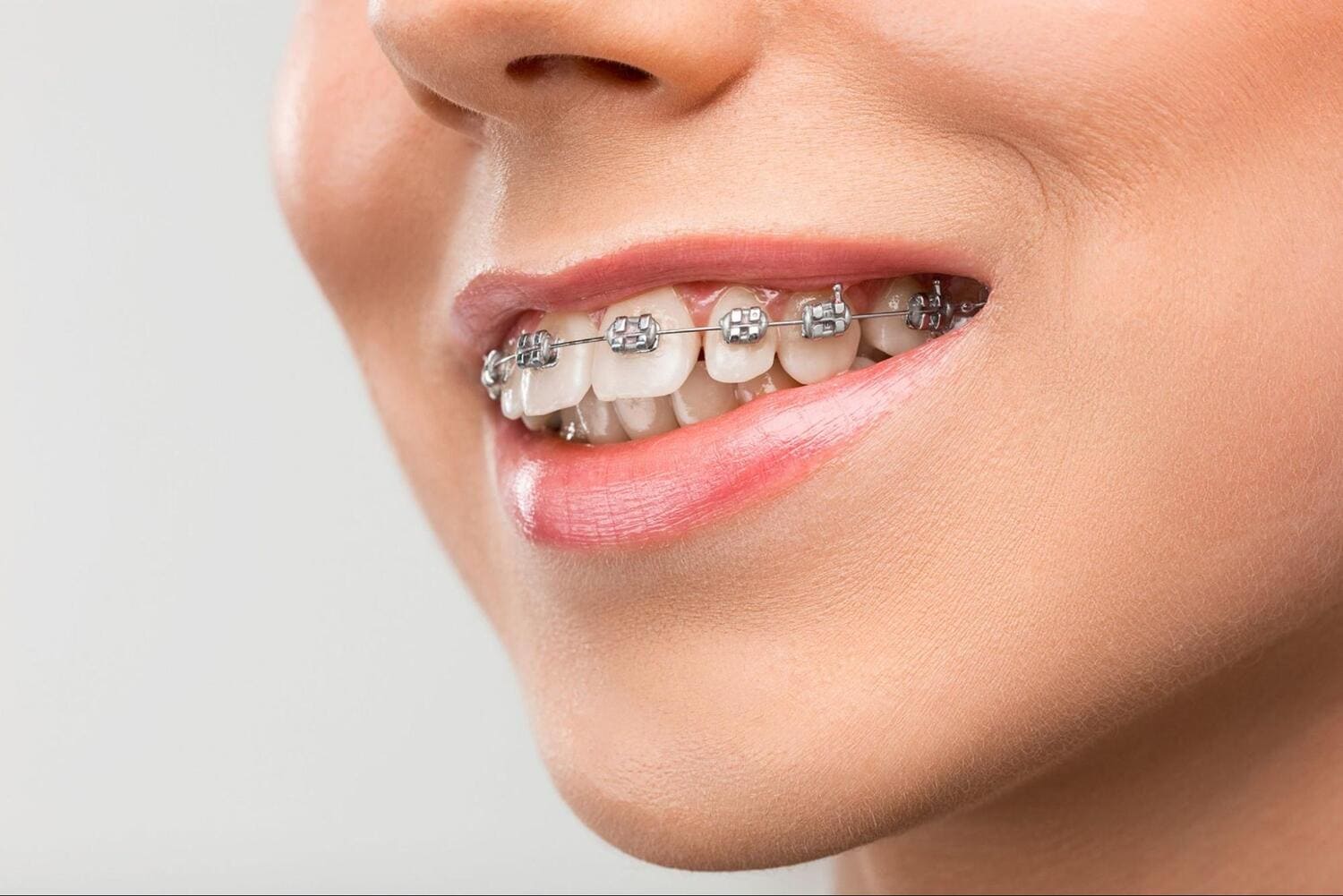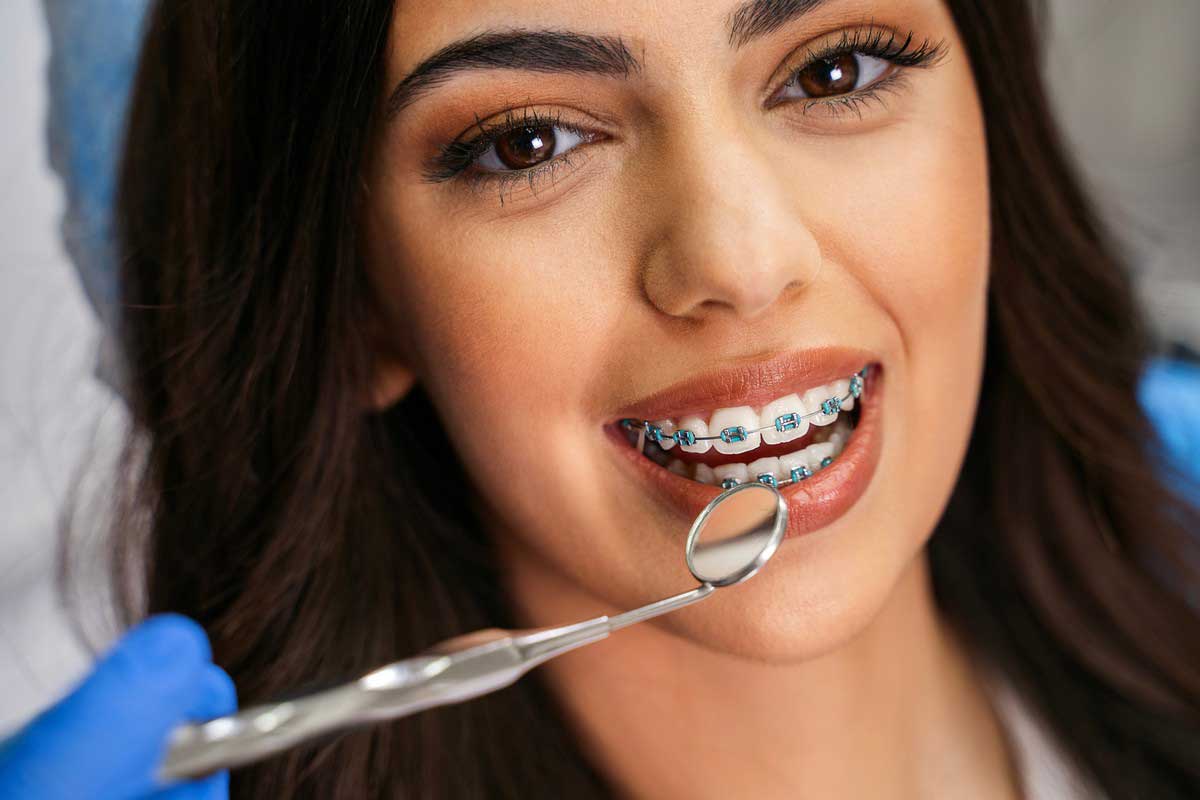The quest for a perfect smile continues to gain momentum in 2025, with orthodontic treatments becoming increasingly popular across all age groups. As aesthetic standards evolve and oral health awareness grows, more people are investigating their options for teeth straightening. However, one question remains at the forefront of this journey: how much do braces cost in today’s market?
Understanding the current cost landscape is crucial as prices have shifted since previous years due to technological advancements, inflation, and changing insurance policies. The financial investment required for orthodontic treatment varies significantly based on the type of braces you choose, your location, the complexity of your dental issues, and many other factors.
In this comprehensive guide, we’ll examine the real costs of braces in 2025, explore what influences these prices, and provide insights into payment options to help you make an informed decision about your orthodontic care.
Average Cost of Braces in 2025
When considering orthodontic treatment, knowing the general price ranges helps set realistic expectations. How much do braces cost in 2025? The national averages have seen moderate increases compared to previous years, primarily due to inflation and technology improvements.
Traditional Metal Braces
Traditional metal braces remain the most affordable option, typically ranging from $3,000 to $7,000 for a complete treatment course. Despite being the most visible option, they offer excellent reliability and effectiveness for most orthodontic issues.
Ceramic Braces
Ceramic braces, which offer a more aesthetically pleasing appearance with tooth-colored or clear brackets, generally cost between $4,000 and $8,000. Their higher price reflects the improved aesthetics and more expensive materials.
Lingual Braces
For those seeking the most discreet treatment option, lingual braces—placed behind the teeth rather than in front—represent the premium end of the market at $8,000 to $13,000. Their complete invisibility from the front justifies the higher price point for many image-conscious patients.
Clear Aligner Systems
Clear aligner systems like Invisalign in Mesa fall somewhere in the middle, with most treatments costing between $3,500 and $8,000 depending on case complexity. Their popularity continues to grow due to their combination of aesthetics and convenience.
These figures represent the total treatment cost for most patients with average orthodontic needs. However, it’s important to note that these ranges can fluctuate based on your location, the specific orthodontist you choose, and your individual treatment requirements. Urban areas typically command higher prices than rural settings, and prestigious practices may charge premium rates for their services.
Key Factors That Affect the Cost of Braces
Understanding what drives the cost of orthodontic treatment can help you make sense of price quotes and potentially find ways to manage expenses. Several factors influence how much braces cost for your specific situation.
Case Complexity and Severity
The severity of your orthodontic issues dramatically affects pricing. Minor crowding or spacing problems might cost between $3,000 and $4,500, while moderate alignment challenges typically range from $5,000 to $7,000.
Severe malocclusions (bite problems) or complex cases requiring intensive intervention can easily exceed $8,000. The difference reflects the additional time, expertise, and materials required to achieve optimal results in challenging cases. Each additional complexity factor can increase the overall treatment cost.
Treatment Duration
Treatment duration also plays a significant role in determining cost. Longer treatments require more adjustments, materials, and professional time from your orthodontist.
A treatment lasting 30 months versus one lasting 18 months could add $1,000 to $2,000 to your total cost due to the additional visits and monitoring required. Each adjustment appointment contributes to the overall expense of your care.
Geographic Location
Geographic location creates substantial variation in orthodontic pricing. Treatment in metropolitan areas like New York or San Francisco may cost 30-40% more than identical treatment in smaller cities or rural areas, reflecting differences in operational costs, competition, and regional economic factors.
Orthodontist Experience and Practice Type
Your chosen orthodontist’s experience and reputation can similarly influence pricing. Specialists with extensive experience or those using cutting-edge technology often charge premium rates, sometimes 20-25% above the average. Practices with state-of-the-art facilities in prime locations typically have higher fees to cover their operational costs.
The rise of at-home versus in-office treatment options has also disrupted traditional pricing models. Direct-to-consumer aligners have entered the market with lower prices, typically $1,500 to $3,000, though they don’t include the in-person supervision that characterizes traditional orthodontic care.
Cost Differences by Type of Braces
The type of braces you choose significantly impacts the overall price of your orthodontic treatment. Each system offers a different combination of aesthetics, comfort, efficiency, and convenience—all factors that influence cost.
Metal Braces: The Economic Standard
As mentioned earlier, metal braces remain the most affordable option in orthodontic care. Their lower price point results from established technology, standardized components, and relatively straightforward application techniques. The materials used are durable and less expensive to produce, and most orthodontists have extensive experience with their placement and adjustment.
Ceramic Braces: The Aesthetic Compromise
Ceramic braces, while commanding a higher price point than metal options, offer improved aesthetics as their main advantage. The clear or tooth-colored brackets are designed to blend with your natural teeth, making them less noticeable than metal alternatives.
However, this aesthetic advantage comes with higher material costs and greater risk of breakage, potentially increasing replacement costs during treatment. The manufacturing process for these brackets is more complex, contributing to their elevated cost.
Lingual Braces: The Premium Invisible Option
Lingual braces represent the premium tier of orthodontic treatment. Their placement behind the teeth makes them completely invisible from the front, but this advantage requires substantial customization.
Each bracket must be custom-made for the individual tooth on the inside surface, involving complex laboratory work and specialized equipment. Fewer orthodontists offer this option due to the advanced training required, which reduces competition and keeps prices higher. The increased appointment duration and technical complexity further justify their premium pricing.
Clear Aligners: The Modern Middle Ground
Invisalign and similar clear aligner systems offer a balance of aesthetics, convenience, and price. Their cost reflects the proprietary technology, computer modeling, and custom manufacturing required to produce a series of precisely calibrated aligners.
The aesthetic and lifestyle benefits—nearly invisible treatment and the ability to remove the aligners for eating and cleaning—justify their position in the market. The sophisticated software used for treatment planning and the regular production of new aligners throughout treatment contribute to their overall cost structure.
Your choice ultimately depends on balancing aesthetic preferences, lifestyle considerations, and budget constraints. Some patients find the additional cost of less visible options well worth the investment for their confidence during treatment.
What’s Typically Included in the Quoted Price?
When comparing orthodontic treatment costs, it’s essential to understand what services are bundled into the quoted price. Most comprehensive orthodontic packages in 2025 include several key components that should be clearly outlined in your treatment agreement.
Initial Consultation and Diagnostics
The initial consultation and diagnostics typically form the first part of your orthodontic package. This includes a comprehensive oral examination, necessary x-rays (both panoramic and cephalometric), 3D digital scans or impressions, photographs for treatment planning, and the development of your customized treatment plan. Some practices charge separately for the initial consultation, while others apply this fee toward treatment if you proceed.
Core Treatment Components
The core treatment components constitute the bulk of what you’re paying for. This encompasses all necessary appliances (whether brackets, wires, bands, or aligners), the installation of the braces or delivery of aligners, regular adjustment appointments, progress monitoring throughout treatment, and minor repairs or replacements of standard components as needed during the course of care.
Post-Treatment Care
Post-treatment care is often included as well, covering your initial set of retainers (typically one pair), initial retainer check appointments, and final records to document your results. This phase is crucial for maintaining the improvements achieved during active treatment.
What May Not Be Included
Be aware that some practices may not include certain elements in their base price. Pre-orthodontic treatments like extractions or periodontal work, specialized diagnostic tests beyond standard imaging, extended retention supervision beyond the initial period, replacement retainers beyond the first set, and post-treatment refinements might incur additional fees. Always clarify whether these potentially additional costs are included in your quoted price.
Getting a detailed breakdown of what’s included helps prevent surprise charges and allows for more accurate comparison shopping between providers. A transparent discussion about included services should be part of any orthodontic consultation.
Does Insurance Cover Braces in 2025?
Dental insurance coverage for orthodontics has evolved in 2025, though limitations still exist. Understanding your benefits can substantially reduce how much braces cost out-of-pocket.
Typical Coverage Patterns
Most dental insurance plans that include orthodontic benefits typically cover 50% of treatment costs up to a lifetime maximum. This maximum typically ranges from $1,500 to $2,500, though premium employer-provided plans may offer enhanced coverage with maximums of $3,000 to $4,000. This partial coverage can significantly reduce your immediate financial burden.
Age Restrictions and Waiting Periods
Age restrictions remain common in many insurance policies. Numerous plans still prioritize coverage for patients under 18, with more limited benefits available for adults seeking orthodontic treatment. Newly activated insurance policies often impose a 6-12 month waiting period before orthodontic benefits become available. Planning ahead can help you maximize these benefits when they become accessible.
Using Tax-Advantaged Accounts
Orthodontic expenses remain qualified for Flexible Spending Accounts (FSA) and Health Savings Accounts (HSA), providing tax advantages that can effectively reduce treatment costs by your tax rate. Many orthodontic practices are experienced in helping patients coordinate these benefits.
Maximizing Your Benefits
To maximize your insurance coverage, request a detailed pre-treatment estimate from your orthodontist and submit this to your insurance provider for pre-determination of benefits. Understand how your provider handles insurance payments—some insurance companies provide benefits as a lump sum, while others release payments monthly throughout treatment.
Remember that insurance benefits for orthodontics often work differently than general dental coverage, so consulting with both your insurance provider and your orthodontist’s financial coordinator is essential for accurate budgeting and to avoid unexpected costs.
Payment Plans and Financing Options
Concerned about the upfront cost? Fortunately, paying for braces has become more flexible in 2025, with numerous options to make treatment more accessible.
In-House Financing
Most orthodontic practices offer in-house financing that spreads the cost over the treatment duration. These arrangements typically include an initial down payment ranging from 10-25% of the total treatment cost (approximately $500-$1,500), followed by monthly payments of $100-$250. These plans are often interest-free or carry minimal interest, with administration handled directly through the practice for convenience.
Third-Party Healthcare Financing
Third-party financing provides alternative payment solutions through specialized healthcare credit options. Companies like CareCredit, LendingPoint, and other medical financing providers offer terms typically ranging from 12-60 months. Interest rates can vary significantly—from promotional 0% offers to 20% or higher based on your credit score. These options generally provide more flexible payment terms than in-house financing but may involve more stringent credit requirements.
Discount Opportunities
Many practices offer prepayment incentives, providing discounts of 3-7% for patients paying the entire treatment cost upfront. Additionally, watch for seasonal promotions, particularly during traditionally slower periods like winter months, when some practices offer reduced down payments or extended interest-free periods to attract new patients.
When exploring financing options, always read the agreement carefully, paying special attention to interest rates, payment schedules, and any penalties for missed or late payments. The financial coordinator at your orthodontist’s office can help you understand your options and choose the plan that best fits your budget and financial situation.
Hidden Costs to Watch For
When budgeting for orthodontic treatment, be aware of potential additional expenses that might not be immediately apparent when considering how much braces cost.
Emergency and Unplanned Care
Unplanned care can add significant costs during treatment. Emergency visits for broken brackets or wires typically range from $25 to $100 per occurrence. These unexpected visits often happen due to eating restricted foods or accidental impacts during sports or everyday activities.
Replacement of lost or broken removable appliances can be considerably more expensive, often costing between $250 and $700. Additional appointments beyond the standard treatment schedule might incur fees of $50 to $150 each, depending on the practice’s policies.
Compliance-Related Expenses
Compliance issues can extend treatment time and increase costs. Poor cooperation with treatment instructions, such as not wearing elastics as directed, can lengthen the overall treatment timeline and necessitate additional adjustments.
Lost or damaged aligners require replacements, typically costing $100 to $300 per set. Additional services to address issues arising from inadequate oral hygiene may also add to your total investment. Many patients underestimate these potential costs when budgeting for their orthodontic treatment.
Long-Term Maintenance Costs
Post-treatment expenses should be factored into your long-term budget. Replacement retainers, needed every few years with normal wear, cost between $150 and $600 per set. Extended retention supervision beyond included visits may involve additional fees. Perhaps most significantly, potential retreatment costs can arise if retainers aren’t worn as directed, allowing teeth to shift back toward their original positions.
To minimize these extra costs, follow all treatment instructions carefully, maintain excellent oral hygiene, protect your appliances as directed, and keep scheduled appointments. Discussing potential additional costs upfront with your orthodontist can help you prepare a more comprehensive budget for your treatment and avoid unwelcome financial surprises.
Affordable Alternatives and Discounts
Looking to reduce the financial impact of orthodontic treatment? Consider these cost-saving approaches when researching how much braces cost.
Academic and Training Programs
Academic options provide significant savings opportunities. Dental school orthodontic programs typically offer 30-50% discounts compared to private practice fees, with treatment provided by residents under faculty supervision. Similarly, orthodontic residency programs offer comparable discounts with slightly more experienced providers. University-affiliated research studies occasionally offer free or reduced-cost treatment for patients who meet specific criteria.
Community and Charitable Options
Community resources exist for those with financial constraints. Nonprofit dental clinics often provide orthodontic services on an income-based sliding scale fee structure. Organizations like Smiles Change Lives and similar charitable programs offer subsidized treatment for qualifying children from low-income families. Government-supported clinics may provide reduced rates based on demonstrated financial need.
Practice Discounts and Promotions
Many practices offer their own savings programs. Family treatment discounts typically range from 5-15% off when multiple family members receive care simultaneously. Professional courtesy discounts are common for teachers, military personnel, and first responders. Referral programs may provide credits toward your treatment when you refer new patients, and seasonal promotions often feature special pricing during traditionally slower periods.
When exploring discounted options, carefully assess whether the savings justify any compromises in treatment quality or supervision. The least expensive option isn’t always the most economical in the long run, particularly if it results in incomplete correction or requires retreatment later. Quality orthodontic care remains an investment in both health and confidence.
Why Choose Nathan Davis Orthodontics
Choosing the right orthodontist is just as important as knowing how much braces cost. At Nathan Davis Orthodontics, patients receive personalized care, modern treatment options, and transparent pricing that helps them plan with confidence. The practice is committed to using advanced technology for precise results while keeping patient comfort a priority.
What sets Nathan Davis Orthodontics apart is the dedication to patient education, ensuring that every individual understands their treatment journey. With flexible financing, family-friendly service, and a reputation built on trust and results, the practice provides exceptional orthodontic care for children, teens, and adults alike. Whether you’re considering traditional braces or clear aligners, Nathan Davis Orthodontics offers tailored solutions designed to fit your lifestyle and budget.
Conclusion: Understanding Costs Is Key to Smarter Orthodontic Choices
As we’ve explored throughout this guide, the answer to “how much do braces cost” isn’t straightforward—prices range widely based on treatment type, location, individual needs, and financial resources. In 2025, patients have more options than ever, from traditional metal braces to high-tech clear aligners, with corresponding price points to match every need and budget.
The key to making a sound financial decision about orthodontic treatment lies in doing your homework: get multiple consultations, understand exactly what’s included in quoted prices, verify your insurance benefits, and explore all available payment options. Remember that orthodontic treatment is an investment in both oral health and confidence that yields returns for decades to come.
Whether you opt for budget-friendly metal braces or premium aesthetic options, what matters most is working with a qualified professional who can deliver the results you need. Schedule consultations with licensed orthodontists to receive personalized treatment recommendations and accurate cost estimates for your specific situation.
Your perfect smile is achievable at various price points—armed with the knowledge from this guide, you’re now prepared to find the option that best balances your clinical needs, aesthetic preferences, and financial considerations.
FAQs
How much do braces cost for kids in 2025?
For children, braces typically cost between $3,000 and $7,000 depending on the type of braces and the complexity of the treatment. Many insurance plans cover a portion of these costs for patients under 18.
Are clear aligners cheaper than traditional braces?
Clear aligners like Invisalign often range from $3,500 to $8,000, which can be similar or slightly more than traditional braces. Their price depends on treatment length and case complexity.
Does insurance usually cover braces for adults?
Some insurance plans provide orthodontic benefits for adults, but coverage is often more limited than for children. Many adult patients use HSAs, FSAs, or payment plans to manage costs.
What happens if I lose or damage my braces or aligners?
Lost or damaged appliances may lead to additional costs, typically ranging from $100 to $300 for aligner replacements and higher fees for brackets or retainers. Proper care helps avoid these expenses.
How can I make braces more affordable?
Patients can reduce costs by exploring in-house financing, third-party financing, or family discounts. Some also choose dental schools for discounted treatment or use tax-advantaged accounts like FSAs or HSAs.


